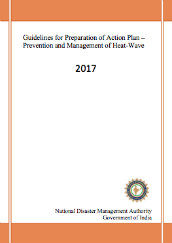Earthquake disaster risk index report
India’s hazard profile shows that about 59 percent area of India is vulnerable to moderate to major earthquakes. It is evident from past earthquakes such as Manipur (2016), Nepal (2015), Sikkim (2011),
India’s hazard profile shows that about 59 percent area of India is vulnerable to moderate to major earthquakes. It is evident from past earthquakes such as Manipur (2016), Nepal (2015), Sikkim (2011),

These guidelines aim to facilitate the formation of heat wave action plans among disaster risk reduction stakeholders in India, by providing insights into heat-related illness and the necessary mitigative
The purpose of this document is to formulate guidelines for the preparation of plans to make India disaster resilient and reduce loss of lives. The plan is based on the four priority themes of the "Sendai
<p>Temperatures across India have been rising on an average of 0.7 degrees every decade with 2016 the hottest so far. These guidelines prepared by the National Disaster Management Authority will facilitate the stakeholders in preparing and implementing an effective heat wave management and action plan.</p>
This report documents good practices and identifies various issues which may need to be considered for effective and coordinated response for cyclone disaster risk management. It takes into account the
The objective of the Guidelines is to institutionalize the role of NGOs in disaster management and to strengthen the quality, synergy and accountability of NGO systems in India. These Guidelines will be
Different legislations have been enacted at the State and Central level to deal with different types of disasters. Of these there are certain Acts whose operation spread across different types of disasters
The objectives of the National Policy on Disaster Management are: Promoting a culture of prevention, preparedness and resilience at all levels through knowledge, innovation and

This document details the guidelines aimed at institutionalising the landslide hazard mitigation efforts, to make society aware of the various aspects of landslide hazard in the country and to prepare the society to take suitable action to reduce both risks and costs associated with this hazard. Includes regulatory and non-regulatory frameworks with defined time schedules for all activities.
India is highly vulnerable to floods and out of the total geographical area of 329 mha, more than 40 mha is flood prone. Floods are recurrent phenomenon, which cause huge loss of lives and damage to livelihood